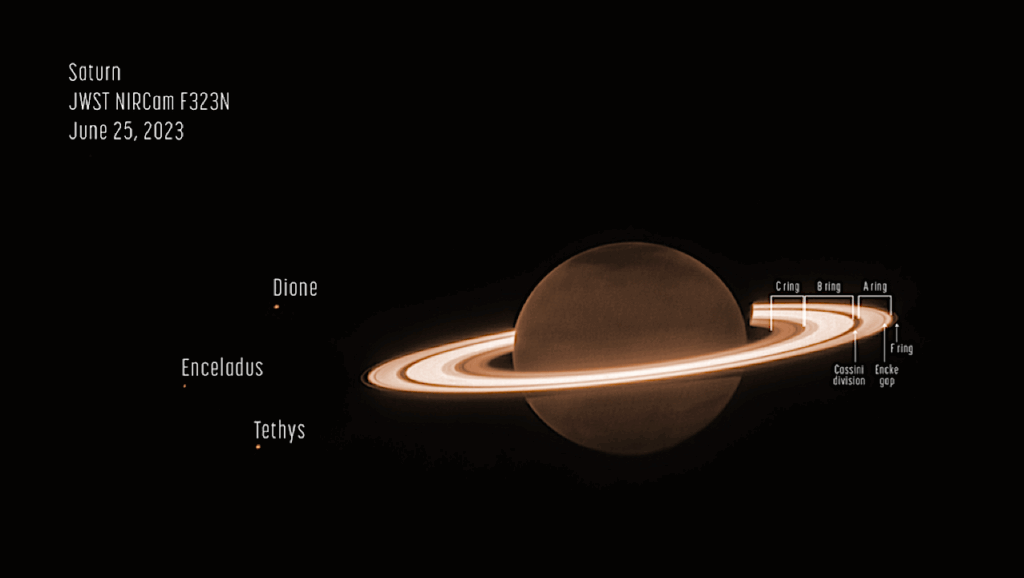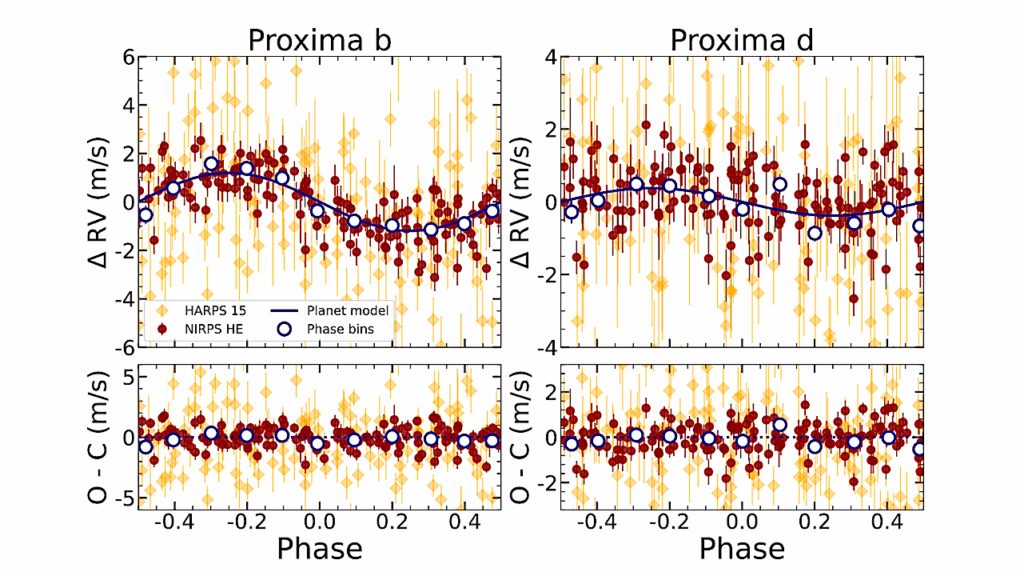A Candidate Short-period Sub-Earth Orbiting Proxima Centauri

Proxima Centauri is the closest star to the Sun. This small, low-mass, mid M dwarf is known to host an Earth-mass exoplanet with an orbital period of 11.2 days within the habitable zone, as well as a long-period planet candidate with an orbital period of close to 5 years.
We report on the analysis of a large set of observations taken with the ESPRESSO spectrograph at the VLT aimed at a thorough evaluation of the presence of a third low-mass planetary companion, which started emerging during a previous campaign. Radial velocities (RVs) were calculated using both a cross-correlation function (CCF) and a template matching approach. The RV analysis includes a component to model Proxima’s activity using a Gaussian process (GP). We use the CCF’s full width at half maximum to help constrain the GP, and we study other simultaneous observables as activity indicators in order to assess the nature of any potential RV signals. We detect a signal at 5.12 ± 0.04 days with a semi-amplitude of 39 ± 7 cm/s. The analysis of subsets of the ESPRESSO data, the activity indicators, and chromatic RVs suggest that this signal is not caused by stellar variability but instead by a planetary companion with a minimum mass of 0.26 ± 0.05 M⊕ (about twice the mass of Mars) orbiting at 0.029 au from the star. The orbital eccentricity is well constrained and compatible with a circular orbit.
J. P. Faria, A. Suárez Mascareño, P. Figueira, A. M. Silva, M. Damasso, O. Demangeon, F. Pepe, N. C. Santos, R. Rebolo, S. Cristiani, V. Adibekyan, Y. Alibert, R. Allart, S. C. C. Barros, A. Cabral, V. D’Odorico, P. Di Marcantonio, X. Dumusque, D. Ehrenreich, J. I. González Hernández, N. Hara, J. Lillo-Box, G. Lo Curto, C. Lovis, C. J. A. P. Martins, D. Mégevand, A. Mehner, G. Micela, P. Molaro, N. J. Nunes, E. Pallé, E. Poretti, S. G. Sousa, A. Sozzetti, H. Tabernero, S. Udry, M. R. Zapatero Osorio
Comments: 17 pages, 13 figures
Subjects: Earth and Planetary Astrophysics (astro-ph.EP); Solar and Stellar Astrophysics (astro-ph.SR)
DOI: 10.1051/0004-6361/202142337
Cite as: arXiv:2202.05188 [astro-ph.EP] (or arXiv:2202.05188v1 [astro-ph.EP] for this version)
Submission history
From: João Faria
[v1] Thu, 10 Feb 2022 17:44:20 UTC (902 KB)
https://arxiv.org/abs/2202.05188
Astrobiology








